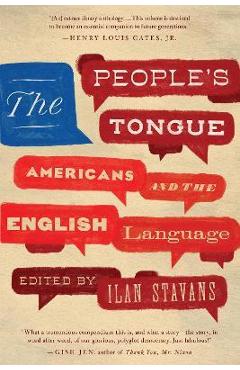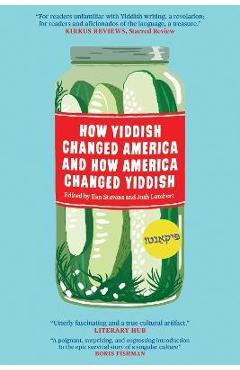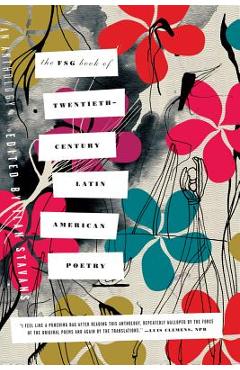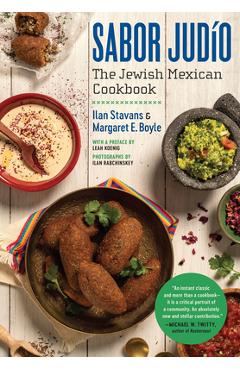Jewish Literature: A Very Short Introduction - Ilan Stavans

Detalii Jewish Literature: A Very Short
libris.ro
59.26 Lei
66.67 Lei
Literary Criticism
Ilan Stavans
Jewish Literature: A Very Short - Disponibil la libris.ro
Pe YEO găsești Jewish Literature: A Very Short de la Ilan Stavans, în categoria Literary Criticism.
Indiferent de nevoile tale, Jewish Literature: A Very Short Introduction - Ilan Stavans din categoria Literary Criticism îți poate aduce un echilibru perfect între calitate și preț, cu avantaje practice și moderne.
Preț: 59.26 Lei
Caracteristicile produsului Jewish Literature: A Very Short
- Brand: Ilan Stavans
- Categoria: Literary Criticism
- Magazin: libris.ro
- Ultima actualizare: 25-10-2024 01:12:27
Comandă Jewish Literature: A Very Short Online, Simplu și Rapid
Prin intermediul platformei YEO, poți comanda Jewish Literature: A Very Short de la libris.ro rapid și în siguranță. Bucură-te de o experiență de cumpărături online optimizată și descoperă cele mai bune oferte actualizate constant.
Descriere magazin:
The story of Jewish literature is a kaleidoscopic one, multilingual and transnational in character, spanning the globe as well as the centuries. In this broad, thought-provoking introduction to Jewish literature from 1492 to the present, cultural historian Ilan Stavans focuses on its multilingual and transnational nature. Stavans presents a wide range of traditions within Jewish literature and the variety of writers who made those traditions possible. Represented are writers as dissimilar as Luis de Carvajal the Younger, Franz Kafka, Bruno Schulz, Isaac Babel, Anzia Yezierska, Elias Canetti, Isaac Bashevis Singer, Irving Howe, Clarice Lispector, Susan Sontag, Philip Roth, Grace Paley, Amos Oz, Moacyr Scliar, and David Grossman. The story of Jewish literature spans the globe as well as the centuries, from the marrano poets and memorialists of medieval Spain, to the sprawling Yiddish writing in Ashkenaz (the Pale of Settlement\' in Eastern Europe), to the probing narratives of Jewish immigrants to the United States and other parts of the New World. It also examines the accounts of horror during the Holocaust, the work of Israeli authors since the creation of the Jewish State in 1948, and the ingathering of Jewish works in Brazil, Bulgaria, Argentina, and South Africa at the end of the twentieth century. This kaleidoscopic introduction to Jewish literature presents its subject matter as constantly changing and adapting.

Produse asemănătoare

Jewish Literature: A Very Short Introduction, Paperback/Ilan Stavans
![]() elefant.ro
elefant.ro
Actualizat in 21/12/2024
54.99 Lei

The Object of Jewish Literature. A Material History, Hardback/Barbara E. Mann
![]() elefant.ro
elefant.ro
Actualizat in 21/12/2024
342.99 Lei

Jewish Literature: A Very Short Introduction - Ilan Stavans
![]() libris.ro
libris.ro
Actualizat in 25/10/2024
59.26 Lei
Produse marca Ilan Stavans

The People\'s Tongue: Americans and the English Language - Ilan Stavans
![]() libris.ro
libris.ro
Actualizat in 15/12/2024
173.6 Lei

How Yiddish Changed America and How America Changed Yiddish - Ilan Stavans
![]() libris.ro
libris.ro
Actualizat in 15/12/2024
109.12 Lei

Spanglish: The Making of a New American Language - Ilan Stavans
![]() libris.ro
libris.ro
Actualizat in 15/12/2024
84.27 Lei

The Fsg Book of Twentieth-Century Latin American Poetry: An Anthology - Ilan Stavans
![]() libris.ro
libris.ro
Actualizat in 15/12/2024
148.8 Lei

Sabor Judío: The Jewish Mexican Cookbook - Ilan Stavans
![]() libris.ro
libris.ro
Actualizat in 15/12/2024
198.4 Lei
